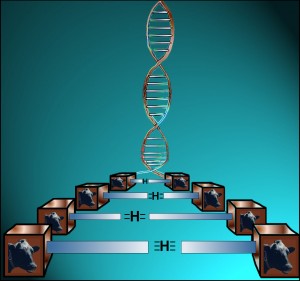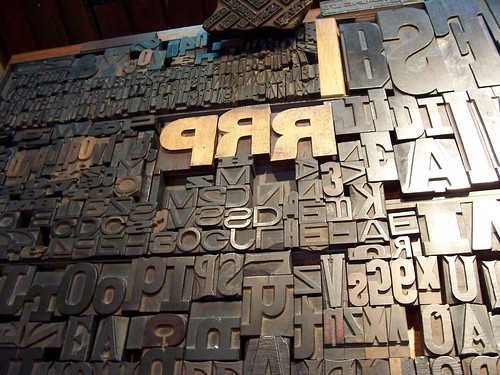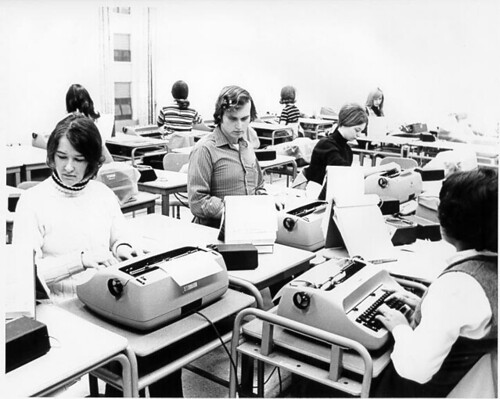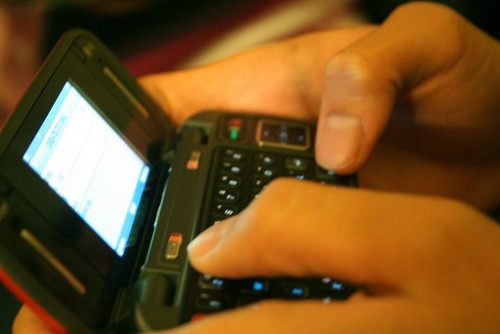Texting, Text and Technology
The warning was clear.
“Don’t spend too much time wandering in the Commons: it can be an amazing place in which to get lost!” (Module 1, instructions for Flickr activity).
I got lost anyway. For days I searched for the image that I thought would be indicative of the issues relating to the course, until it hit me. Literally.
He was a preppy-looking teenager, busily texting on his iPhone. He never looked up, even after our brief, but painful physical contact. When function was finally restored to my thumbs, I did the only natural thing: whipped out the cell phone and wrote myself a reminder through email — “Idea for Flickr activity: TEXTING!”
The connection between texting and text and technologies is self-explanatory and almost too obvious. Creating text using cell phone technology! Of greater interest though, is how computer technology and new software are changing our language patterns, as evidenced by the addition of podcasting to the Oxford English Dictionary in December 2008, and when third graders scurry over after a read-aloud and comment, ‘”O.M.G! That was such a funny book, L.O.L”
September 13, 2009 No Comments
Technological Simplicity?

Morgendämmerung, originally uploaded by hailewelt.
Hello, my name is Stephanie Hopkins (I was Prizeman last semester), and this semester I am taking my 5th and 6th MET courses. I am from Victoria, BC, but now call Port Alberni home. I teach grade 7 and 8, I am married with one child, and I am afraid of airplanes.
I chose this image not only for its “frightening” beauty, but also the thoughts and feelings it evoked for me. The idea of air travel and aircraft in general is a mind-boggling and frightening thought to me, but is also one of the most important (for both positive and negative reasons) technologies in our history as humans.
As various technologies propel humankind into the future, I worry about the effects that these new and improve technologies wil have on us. The simple beauty of the sunset and landscape in the photo is a reminder of where we have come from, and what we have to lose if we are not careful.
The juxtaposition of the two ideas in this photograph compels me to think about the future and what my feelings are on where we are going as humans. I am far from a technophobe, in fact, like others on this forum, I too cannot seem to function without my email with me at all times, but I am becoming increasingly aware that if I do not have balance of chaos and simplicity in my life, then I will create problems for myself and my family.
Food for thought, anyway!
Cheers,
Stephanie (Prizeman) Hopkins
September 13, 2009 1 Comment
A blank slate, and building blocks

Image from my archives. From a VPN magazine article.
The picture I selected reminds me of writing, as it generates in me a thought that the stitching together of units will result in a synergy; in the case of genes, life. More than the sum of the parts.
How we turn a blank slate (be it stone, paper, or an electronic interface) into a carefully crafted, stitched together collection of units (words, phrases) called writing is a process applied in very different settings and media these days. Successful text technologies are the sum of much more than the jumble of letters one sees if quickly perusing a text-filled page.
In the image, we see a stitching together of the building blocks of life; seeing something with a high degree of order formed using a finite collection of building blocks.
Writers must first face a blank “page”, and their text changes the space. The writing will change those who can assimilate meanings from the words and phrases. How a writer will achieve that end is determined by the traditions and rules of each language, the tools, the cultural setting, and will evolve according to the times they live and work in.
I am taking my 7th an d8th courses this fall. I am involved in technical writing and editing, I coach students for communication skills in veterinary training, and instruct a university course online. I also have developed many educational materials in electronic, print, and graphic art formats over the years. (When not doing family activities and clinical practice!)
I think this will be a fascinating course. I have had the good fortune of being able to wear many hats over the years while working on educational projects, but around every corner in the MET program, I find challenges and enrichment of my understanding of the processes we can apply, in order to turn a “blank slate” into something much more.
Warm regards to all, Kathleen Cavanagh
September 10, 2009 No Comments
Typefaces Galore

Typefaces Galore, originally uploaded by Kevin Lawver.
My name is Natalie Giesbrecht and I am a Distance Learning Program Development Specialist (aka the fancy name for instructional designer) for the online distance education unit at the University of Guelph. I work with faculty and instructors to design and develop online courses for degree students and adult learners. Prior to this, I guided a team of designers and copyright assistants to produce and distribute course materials. As for education, my degree is from the University of Guelph, where I studied photography, video, sculpture and art history.
Over the last 10 years I have developed a fascination for graphic design and typography. So when thinking about the words text and technology, for me the printing press naturally comes to mind. Thus the photo I choose depicts wood letterforms used in letterpress printing. Letterpress printing is certainly both an art and a craft – though now a dying skill.
Last summer I was lucky enough to get a tour of Coach House Press in Toronto, Ontario and an opportunity to try my hand at letterpress printing. From this experience I learned how much time and accuracy is needed in order to perfectly typeset a final printed product. Consideration is given to every aspect of each letter on a page. Most importantly quality checks on the finished pieces are always done to ensure that the reader has the best experience possible. With the speed and ease of computer publishing, I have a whole new appreciation for traditional ways of printing.
ETEC*540 is my 9th course! During this semester I am interested in exploring the convergence of old and new technologies and how this affects literacy – particularly printed books versus e-books. I am also interested in how new media, mobile and social technologies impact how we communicate – the way we read, write, find and understand information – and how this impacts online education.
With the variety of backgrounds and skill sets of all of us in this course, I think this will be a challenging and rewarding semester!
September 10, 2009 No Comments
Typing Class, 1970s – an update is available on this classroom

Typing Class, 1970s, originally uploaded by SinclairCommunityCollege.
Update the hair and clothing by a decade, and this would look like my high school typing class. Take away the power cords and regress a few decades, and this would look like my mom’s high school typing class. Now, typing classes have been replaced with computer applications courses, which teach touch typing in two to three months (e.g., http://south.sd41.bc.ca/depts/courses/cselection.htm – from the website of my alma mater), as by the time most students enter high school, they have been using a QWERTY keyboard attached to a computer for years, many without a lesson. This allows for a greater exploration of the creative applications of the technology far beyond the endless speed drills I spent doing in Typing 10. What change will the next innovation bring?
As a side note, I also considered the furniture and electrical systems that needed to change from the time when the first manual typewriter was introduced in typing classes, through electric typewriters, through a constant upgrade of computers. Education is, indeed, getting more expensive!
Hello! I am Tracy Gidinski. I will be teaching grades 6 and 7 at Taylor Park Elementary School in Burnaby, British Columbia. I have been teaching for 16 years, always focusing on grades 5 to 7 (and, for a four-year time, teaching a multiage 5/6/7 class). My preferred grade is combined 6/7. For the past few years, I have had my students create personal blogs and cooperative wikis, and am interested in further extending my students’ abilities to use technology to improve their literacy and thinking skills, which leads me to this course. This is my second MET course – I took ETEC 512 last year, and am hoping that the steep learning curve of taking a course online will be less steep this semester!
September 8, 2009 1 Comment


